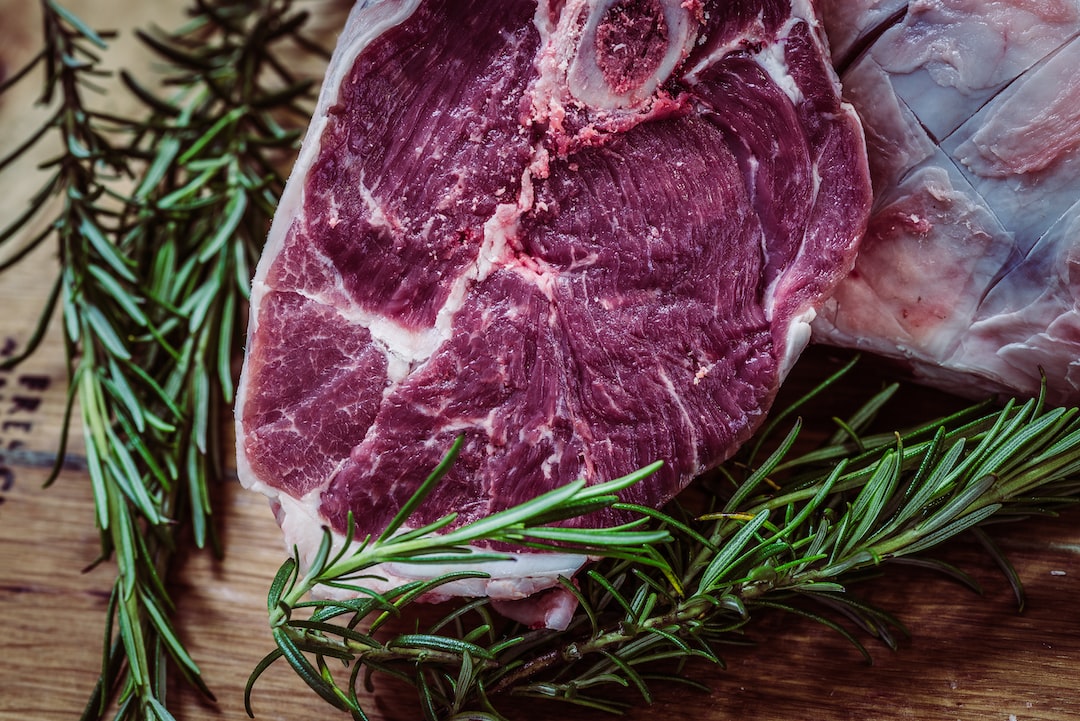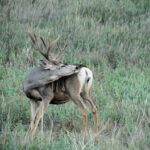Are you looking for the best way to process your deer meat?
From selecting the right grinder, preparing venison for grinding, and using it safely and effectively – there are a few key steps to consider when making ground venison.
But don’t worry. We’ve got all of that covered with our guide on finding the best meat grinders for deer. So let’s get started learning about how we can make sure your next batch of wild game is as delicious as possible.
Selecting the Right Grinder
When selecting a grinder for deer processing, there are several considerations to keep in mind.
The first is the type of grinder you will need: electric or manual. Electric grinders provide higher power and speed, but they necessitate an electrical connection and can be costly. Manual grinders are less powerful, but they don’t require electricity and tend to be cheaper.
The next factor to consider is what features you want your grinder to have. If you plan on grinding large amounts of meat at once, look for a model with larger capacity trays and feed tubes that can handle bigger chunks of meat without clogging up the machine.
Other features like reverse functions (for unclogging), multiple cutting plates (for different textures) and sausage stuffing attachments may also come in handy depending on your needs.
Finally, it is important to make sure that the grinder is made from durable materials so it can withstand repeated use over time without breaking down or becoming damaged easily by exposure to moisture or other elements like dirt or dust particles from grinding wild game meats outdoors.
Seek out grinders crafted from stainless steel or aluminum, which offer corrosion-resistance and are easy to maintain after each use.
Selecting the right grinder is essential to ensuring you get a quality product and can process your venison efficiently. To ensure that your meat grinding experience is successful, it’s important to prepare your venison properly before feeding it into the grinder.
Preparing Your Venison for Grinding
Cleaning and trimming the meat is an important step in preparing venison for grinding.
Start by removing any fat, sinew, or silver skin that may be present on the meat. Using a sharp blade or kitchen scissors, take your time to cut away any fat, sinews, or silver skin from the meat.
It’s important to take your time and make sure all of these pieces are removed before grinding because they will affect the texture of your finished product.
Chilling the meat before grinding is essential to achieving a smooth texture and good flavor in your ground venison.
Place the trimmed meat in a shallow dish or container lined with plastic wrap, cover it tightly with another layer of plastic wrap, then place it in the refrigerator overnight so that it’s well chilled when you begin grinding.
Cutting the meat into small pieces is also necessary for successful grinding results.
Use a sharp knife to cut off any large chunks from larger cuts like roasts or steaks and cube them into 1-inch cubes if possible; smaller cubes will grind more easily than larger ones do. You should also trim away any remaining fat from around each piece as this can cause clogging during processing
Preparing the venison for grinding is essential to achieve desired results. To ensure you use your grinder safely and effectively, it’s essential that you set up the device correctly before beginning.
Using Your Grinder Safely and Effectively
Using your grinder safely and effectively is essential for successful deer processing. Setting up the grinder properly, feeding the meat through carefully, and cleaning and maintaining it after use are all important steps to follow.
Ensure that your workspace can bear the burden of the grinder before beginning setup. It’s also important to ensure that any cords or hoses are out of reach of moving parts so they don’t get tangled or caught in them while operating.
Additionally, always double-check that all screws are securely tightened before plugging in your grinder.
Feeding the meat through your grinder requires careful attention as well. If you try to force too much at once into the hopper it could cause clogs or jamming which could damage both your equipment and product quality if not addressed quickly enough.
To avoid this issue altogether start with small batches at first until you get used to how much fits comfortably inside without creating an obstruction within the blades or auger area of your machine.
Finally, cleaning and maintaining your grinder after each use is key for keeping it running smoothly over time; just like any other tool it needs regular upkeep to stay in top condition.
Make sure you unplug it before beginning any kind of maintenance then give each part a thorough scrubbing with warm water mixed with soap or vinegar solution depending on what material components were exposed during processing (i.e., stainless steel vs aluminum).
Once everything has been wiped down dry thoroughly with a clean cloth then reassemble all pieces back together before storing away until next time.
To ensure optimal outcomes, it is imperative to exercise caution and proficiency when utilizing a grinder. With that being said, it is also important to understand the best practices for making ground venison so you can get delicious meals every time.
Best Practices for Making Ground Venison
Making ground venison is a great way to enjoy the taste of wild game. It can be used in burgers, tacos, chili, and so much more.
To ensure that your ground venison turns out juicy and flavorful every time, there are some best practices you should follow.
Adding Fat:
Adding fat to your ground venison will help keep it moist while cooking. Use equal parts lean cuts of meat and fat when grinding for the best results. Try using beef or pork fat for an extra boost of flavor. If you don’t have access to these options, use vegetable oil instead.
Flavoring with Herbs & Spices:
A pinch of herbs and spices can really bring out the flavor in your venison dishes. Experiment with different combinations until you find one that suits your tastes best.
For a balanced flavor, try adding garlic powder, onion powder, smoked paprika, oregano leaves, thyme leaves, black pepper flakes or sea salt flakes to your venison dishes in moderation.
Storing Ground Venison Properly:
Ground venison needs to be stored properly if it’s going to stay fresh longer than a few days after being made into patties or sausages.
Storing your meat with a Food Saver is the easiest way I have found to vaccum seal wild game and preserve the freshness in the freezer.
Keep it tightly wrapped in plastic wrap or foil before freezing for up to six months; thawing should always be done slowly in the refrigerator overnight before using again (or else bacteria could grow).
Alternatively you could vacuum seal packages if they won’t all fit inside one baggie – this helps maintain optimal quality during storage time.
When making ground venison dishes at home – whether it’s burgers or sausages – following these simple tips will guarantee delicious results each time.
Make sure to add enough fat for juiciness, season generously but not overly so, store correctly by wrapping tightly and freezing within two days, then defrost slowly overnight in the fridge before using again for maximum freshness and flavor preservation every single time.
FAQs in Relation to Best Meat Grinders for Deer
What is a good deer meat grinder?
The best deer meat grinder for hunters and outdoors enthusiasts is the STX Turboforce 3000 Series Electric Meat Grinder.
This powerful machine features a heavy-duty 1200 watt motor, three stainless steel grinding plates, two cutting blades, and a kubbe attachment for making sausages. It has an easy to use on/off switch with reverse function that prevents jamming of the grinder head.
The high quality components make it durable enough to handle tough cuts of venison or other game meats while still delivering consistent results every time.
What is the best meat grinder for wild game?
It features a heavy-duty 2000 Watt motor that grinds up to 240 pounds of meat per hour, making it ideal for processing large amounts of wild game quickly and efficiently. Its three stainless steel cutting blades are designed specifically to handle tougher meats like venison, elk, and moose.
The grinding plates allow you to choose from fine, medium or coarse textures depending on your preference. This grinder also comes with an assortment of attachments such as sausage stuffing tubes and kibbeh attachment which makes it perfect for any kind of wild game preparation project.
What meat grinder does MeatEater use?
MeatEater uses the LEM Products Big Bite Electric #8 0.5 HP Stainless Steel Meat Grinder for their meat grinding needs. This grinder is made of stainless steel, providing exceptional durability and a robust motor to tackle tough cuts with ease.
It features a permanently lubricated fan-cooled motor that runs at 350 watts and .5 horsepower, as well as two stuffing tubes (1/2″ & 3/4″) for different sizes of sausages. With all these features combined, this grinder can easily handle most any job in the kitchen or outdoors when hunting season comes around.
What is the difference between a 12 and a 22 meat grinder?
The main difference between a 12 and 22 meat grinder is the size of their grinding plates. The 12 has smaller diameter grinding plates which produce finer ground meats, while the 22 has larger diameter plates that yield coarser grinds.
Additionally, due to its larger plate size, the 22 can process more meat at once than the 12. As such, if you need a fine-textured grind for your sausages or burgers then go with a 12; however if you’re looking for something chunkier like pulled pork or chili then opt for a 22.
Conclusion
Grinding your own deer meat can be a rewarding experience. With the right grinder and some patience, you’ll have delicious ground venison in no time.
When selecting a grinder for your wild game, make sure to pick one that is up to the task of grinding tough meats like deer.
Always remember safety first when using any kind of kitchen appliance and take care not to over-process your venison.
Finally, experiment with adding different types of fat or seasonings for flavor before cooking up a batch of tasty burgers or sausages made from freshly ground deer or elk or whatever your harvest may be.



